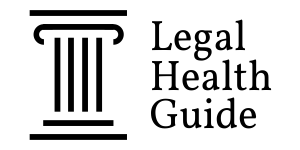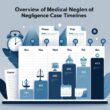Claim submission in medical billing means sending a request for payment to an insurance company after you’ve provided health care services. This step matters because it’s how providers actually get paid for their work.
During claim submission, you have to include accurate details about the patient, the services performed, and the costs involved.
Understanding how claim submission works can help you dodge delays and frustrating mistakes. If a claim is missing info or has errors, the insurance company might deny or reject it, which means you’ll wait longer for payment—or sometimes not get paid at all.
Using the right forms and codes lets your claims move faster through the system and helps you get reimbursed on time.
Key Takeaways
- Claim submission is the process of sending payment requests to insurance after you provide care.
- Complete, accurate info on your claim helps you get paid faster.
- Mistakes or missing details cause delays or denials.
What is Claim Submission in Medical Billing

Submitting claims is a key step in medical billing. Sending claims accurately helps healthcare organizations actually get paid for their services.
There are several ways you can submit claims, and the method you pick can affect how quickly you see your money.
Definition of Claim Submission
Claim submission means you send a bill (a healthcare claim) to an insurance company or payer for services a patient received. This happens after you’ve provided care and coded the services correctly.
You’ll gather details like patient info, diagnoses, and what procedures you did. Insurance companies use this data to decide if they’ll pay, deny, or ask for more info.
You or your staff can handle claim submission, or you might hire a billing company to do it. The main thing is making sure the claim is complete and error-free to avoid headaches and delays.
Auditors and payers might review your submission, so stick to the documentation standards. If you miss statutory deadlines, you could lose out on payment. If you want to dive deeper, check out this overview of the claims submission and medical billing process.
Types of Claims: Paper vs. Electronic
You can submit medical claims on paper forms or electronically using billing software.
Paper claims use physical forms that you mail or fax to the insurance company. This way takes longer and leaves more room for mistakes, but some small clinics still use it if they don’t have electronic systems.
Electronic claims get sent through computers using special billing programs. Usually, they go through a clearinghouse that checks for errors before passing the claim along to the payer.
This speeds things up, helps you track claims, and usually means fewer mistakes. Most healthcare organizations prefer electronic claims, and some payers even require it. Want to know more? Here’s a detailed guide on electronic medical claims systems.
Importance in the Revenue Cycle
Claim submission sits right at the heart of your revenue cycle, which covers everything from scheduling patients to getting paid.
The speed and accuracy of this step determine when and how much money you’ll actually see.
Submitting claims correctly helps you avoid delays, denials, or losing out on payment. Mistakes can mean more admin work and resubmitting claims, which just adds cost and frustration.
You have to meet legal time frames for claim submission, or you risk losing revenue. For more on the impact of claim submission, check this discussion of administrative costs and billing activities.
Key Components of a Medical Claim

A medical claim needs specific details about the patient, the services, the diagnoses, and supporting documentation. Every element has to be complete and accurate—otherwise, you’re just asking for a denial or a long delay.
Required Patient Information
Every claim needs full, accurate patient info. Usually, that’s the patient’s full legal name, date of birth, gender, address, and contact details.
Demographic details like insurance ID numbers, group numbers, and the patient’s relationship to the policyholder also matter. Missing or incorrect info here is one of the top reasons claims get rejected.
Sometimes, you’ll need the patient’s Social Security Number or info about other health coverage. Up-to-date data helps avoid identity or payment mix-ups.
Provider and Insurance Details
Provider info has to be clear on every claim. You’ll need the provider’s name, address, phone, and National Provider Identifier (NPI).
The NPI tells the insurer exactly who performed the service. Insurance info matters just as much—you’ll need the payer’s name, address, contact info, and the member’s group or policy number.
Claims also need to indicate if the provider is in-network or out-of-network for the patient’s plan. Double-check these so the claim gets routed to the right spot and paid on time.
Diagnosis and Procedure Codes
The coding section is the heart of your medical claim. You need diagnosis codes (ICD-10) to explain why the services were needed, showing the patient’s condition or illness.
Procedure codes (CPT codes) identify exactly what you did. Sometimes you’ll also need service codes or modifiers to clarify special circumstances.
Using up-to-date codes and following insurer guidelines helps stop denials. Coding errors are a leading cause of delays and rejections—just check out these claims management resources if you want proof.
Supporting Documentation
Insurance companies often want proof that the services were medically necessary. That means you’ll need to attach things like chart notes, lab results, test reports, referral forms, or a superbill listing all services and codes.
If you don’t include the right documents, you might get a denial or a request for more info. The supporting details you send should back up the diagnosis and procedures you list.
Submitting clear, legible records helps speed up processing and cuts down on the risk of an audit or denial. Seriously, always review your documents before you send them. For more, see these billing compliance strategies.
The Claim Submission Process

Submitting a claim in medical billing has a few key steps. Each one helps make sure you get paid the right amount and on time.
Patient Registration and Eligibility Verification
You start with patient registration, collecting details like name, date of birth, address, and insurance policy numbers. Getting this info right helps you avoid simple mistakes that can cause claim rejections.
After registration, check the patient’s insurance eligibility. You’ll want to verify the policy is active, what it covers, the patient’s copayments, deductibles, and whether you need prior authorization.
Using a checklist or digital system can help you catch problems like expired coverage or excluded services. Many practices use electronic tools to confirm insurance details on the spot and keep records up to date.
Claim Generation and Data Entry
Claim generation means gathering all the details from the patient visit—procedures done, diagnosis codes, provider info, and so on.
Using the right medical codes (CPT, ICD-10, HCPCS) tells the insurance company what you actually did. Enter all the clinical data into your billing or EHR system, then double-check spelling, codes, and dates.
Errors here can mean denials or payment delays. Many billing teams use software and templates to keep things organized and efficient.
Accurate records make audits and future billing way less painful.
Claim Review and Clean Claim Submission
Before you send a claim, do a claim review. Make sure all the data is correct and matches the patient’s chart and insurance requirements.
A claim that’s complete and error-free is called a clean claim. Clean claims are much more likely to get accepted and processed quickly.
Lots of organizations use audits, billing services, or clearinghouses as another check before submission. Clearinghouses can catch problems early, so you spend less time chasing paperwork and more time on patient care. For a deeper dive, see this overview of claims submission and billing processes.
Submission to Insurance Companies
Once your claim is ready and reviewed, you send it to the patient’s insurance company. Most claims go electronically through a practice management system or a clearinghouse, but a few smaller payers still take paper claims.
Electronic submission speeds things up and helps cut down on errors. After sending, check your claim’s progress online or through the clearinghouse portal.
Track the payment status and be ready to answer questions or clarify details for the insurance company. Regular monitoring lets you spot rejected claims or needed corrections early.
Working smoothly with insurance companies helps keep your revenue steady. For more on why this matters, check out this article on accurate insurance claim submission and coding.
Common Claim Forms and Formats

Healthcare providers use different claim forms depending on what services they performed and the type of facility. The main forms are standardized, which makes claim submission more accurate and consistent.
CMS-1500 for Professional Services
The CMS-1500 form is the standard paper claim form for healthcare professionals like doctors, therapists, and clinics billing for outpatient services.
You use this form to submit claims to Medicare, Medicaid, and many private insurance companies. It captures patient details, dates of service, diagnosis codes, procedure codes, and provider information.
A few main sections of the CMS-1500 include:
- Patient and insured information
- Insurance plan and benefit information
- Details about the services provided
Filling out the CMS-1500 accurately helps prevent payment delays or denials. Most providers now send this form digitally, but the data fields match the paper version closely.
For a detailed overview, check out this CMS-1500 claim form explanation.
UB-04 for Institutional Billing
Hospitals, nursing facilities, and other large institutions use the UB-04 form to bill insurance for inpatient and outpatient facility services.
The UB-04, sometimes called the CMS-1450, lets you submit claims for things like surgeries, emergency care, or room charges at the facility level.
Key aspects include:
- Patient demographics and account numbers
- Type of bill code, which tells payers what kind of services were provided
- Revenue codes and service dates
Most payers and hospital systems accept the UB-04 electronically. The fields match the paper form, and both Medicare and private insurers set strict formatting rules to speed up processing and reduce mistakes.
Find more about different forms and formats required in medical billing.
ADA Dental Forms
Dental offices use a unique claim form created by the American Dental Association (ADA).
These forms help bill dental insurance plans for procedures like cleanings, fillings, extractions, and other dental care.
Main features of ADA dental forms include:
- Spaces for detailed tooth and surface information
- Procedure codes specific to dental treatments
- Provider, patient, and subscriber information
You can submit ADA forms on paper or electronically. Each form uses standardized codes so insurance companies can identify and process the services quickly.
For more details, see how the ADA dental claim form is used in coding and billing.
Role of Medical Coding in Claim Submission

Medical coding plays a big role in claim submission. Coders turn a patient’s medical information into universal codes so payers can understand the details.
This helps move payments along faster and with fewer mistakes.
Use of CPT Codes
CPT codes describe the specific services or procedures a provider performs. Each code stands for a unique medical service, like an office visit or a surgery.
Insurers rely on these codes to make payment decisions, so using the right ones matters a lot. If you use the wrong CPT code, you might get a delay, denial, or even less payment than you should.
CPT codes also make communication between providers and payers smoother since everyone uses the same language. This lets you report procedures clearly.
Learn more about how CPT codes keep things consistent at Overview of the claims submission, medical billing, and revenue cycle management processes.
ICD-10 Implementation
The ICD-10 codes record diagnoses, reasons for the visit, and medical conditions. You must link a diagnosis to every billed service.
ICD-10 codes are more detailed than the old ICD-9 version. There are over 70,000 possible codes, so claims can show exactly what a patient was treated for.
Using the right ICD-10 code leads to more precise billing and makes it easier for insurance to see medical necessity. Proper ICD-10 coding is also important for compliance and helps avoid audits or penalties.
Insurers check these codes to decide if care meets policy rules and to prevent fraud.
Errors in Coding and Their Impact
Coding errors can seriously affect claim submission. Common mistakes include using the wrong code, missing a code, or not updating codebooks when guidelines change.
If you submit claims with errors, payments can get delayed or denied. Frequent mistakes might even lead to insurance audits, which can hurt your practice’s finances over time.
Even a small error, like a wrong digit, can cause confusion or misinterpretation of care. Regularly monitoring and auditing your coding process helps lower the chances of rejected claims and lost revenue.
See more on the need for accurate coding and the risks of mistakes at Addressing medical coding and billing part II: a strategy for achieving compliance.
Claim Denials, Rejections, and Resolution

Errors in claim submission can lead to denials, rejections, and lost revenue. Knowing the differences and how to handle them keeps your workflow steady, even if it sometimes feels like a moving target.
Differences Between Denials and Rejections
A claim denial happens when the payer processes your claim but refuses to pay because of coverage, policy, or medical necessity rules.
The claim was received and reviewed, but the payer decided not to pay. A claim rejection happens when your claim doesn’t meet the payer’s requirements and gets bounced back before processing.
Common reasons include missing information, coding errors, invalid patient data, or problems with insurance identification numbers. You can often fix and resubmit rejected claims, but denied claims are tougher and usually need an appeal or more documentation.
High denial and rejection rates point to accuracy or efficiency issues, which can mess with your revenue and workload. For more details, see this overview of the claims submission and revenue cycle.
Common Reasons for Denied Claims
Some reasons for denied claims pop up everywhere. Late submission—missing the time limit—is a big one.
Submitting a duplicate claim after the original has already been received can also trigger a denial. Other common causes include services not covered under the patient’s plan, services that aren’t considered medically necessary, or claims for pre-existing conditions the policy excludes.
If a policy has expired, the claim won’t get paid. Lack of pre-approval for certain treatments or hospital stays is another common problem.
If your claim doesn’t have the right authorization, payment will usually be denied. These issues can cause delays and make more work for everyone.
Examples and more context are in this discussion on top payer reasons.
Denial Management Strategies
Managing denied and rejected claims is key for steady revenue. Try monitoring your claims regularly and tracking why they get denied or rejected.
Use a table or list to organize these by type—like missing info, expired policy, or lack of pre-approval.
Best practices include:
- Reviewing claims for errors before sending them out
- Fixing rejected claims fast and resubmitting
- Setting reminders for timely submission
- Keeping documentation for all services and pre-authorizations
- Training your team on common payer rules
Act quickly when a claim gets denied. Figure out the reason, gather what you need, and file an appeal if it makes sense.
Strong denial management helps reduce claims you have to write off and keeps cash flow steady. See more in this 8-step guide on correcting claim issues.

Impact of Submission Accuracy on Reimbursement
Accurate claim submission affects when and how much you get paid. Mistakes or delays can lead to payment headaches and extra work for your billing team.
Financial Responsibility and Accurate Reimbursement
Your financial responsibility depends on how well your office handles claim details.
When you fill out claim forms correctly, you lower the risk of denials and underpayments from insurance companies. Accurate documentation helps make sure you get paid for the care you provide.
This means entering the right procedure codes, patient info, and billing amounts. Inaccurate claims can lead to rejected or underpaid claims, leaving you to chase patients for payment or appeal to the insurer.
Studies show billing accuracy and good data entry are critical for reimbursement and overall revenue.
If you make mistakes, it hurts your bottom line and adds frustration when you have to fix errors and resubmit.
Delays and Faster Reimbursement
Errors or missing info on claim forms can slow down payment. If a claim gets denied for missing details or wrong information, it usually takes extra time to hunt down the problem, make corrections, and try again.
Delays or errors can pile up and stress out billing teams. Late payments mess with your cash flow and make it harder to cover daily expenses.
On the flip side, clean and accurate claims help you get faster reimbursement. Using practice management software to check claims before you send them can catch errors early and boost the speed and reliability of payments.
Timely Submission for Claims
Submitting claims on time matters just as much as getting the details right. Most insurance companies set strict deadlines called “timely filing limits.”
If you miss the deadline, the insurer can deny payment—even if everything else checks out. That’s a tough pill to swallow after all the work that goes into preparing a claim.
Timely claim submission keeps payment posting predictable. You also avoid annoying extra steps like appeals, which eat up staff time and slow down your reimbursement.
Best Practices for Clean Claim Submission
Clean claims get you paid faster and cut down on headaches from denials. Paying attention to documentation, using good tech, and keeping your team sharp really boosts billing accuracy.
Regular Documentation Audits
Regular audits of your records help you catch mistakes before claims go out the door. You can spot missing signatures, wrong patient info, or incomplete service details that might trip you up.
Make an audit checklist for common errors—like incorrect insurance numbers or mismatched codes. Set a schedule to review claims, maybe once a month or after big system changes.
Write down what you find and fix errors quickly. If you keep things organized, you’ll start to notice patterns and fix bigger issues across your billing process.
Risk management strategies point out that audits are key for catching and fixing coding mistakes. This lowers rejection rates and helps you get paid the right amount.
Utilizing Electronic Health Records
Electronic health records (EHRs) make it easier to gather patient data and cut down on manual errors. EHRs let you keep medical records, insurance info, and billing codes all in one place.
This boosts the accuracy and completeness of your claims. Many EHR systems sync up with practice management software to handle scheduling, payments, and billing checks automatically.
That means fewer mistakes from copying info between systems. You can also flag missing or inconsistent data before you send out claims, which helps your clean claims ratio as explained by the medical billing process.
Pick an EHR system that updates with compliance changes and supports electronic claim submission. It’ll make your workflow way smoother.
Ongoing Staff Training
Your team is a huge part of getting claims right. Ongoing training keeps everyone up to speed on coding rules, payer requirements, and new billing guidelines.
Hold short training sessions or send out updates when regulations shift. Quick-reference guides for tricky billing situations—like secondary insurance or specialty codes—can really help.
Good routines for communication let staff report and solve errors fast. Use feedback from regular audits to tailor training to the issues you actually see.
Teams that know what they’re doing make fewer mistakes, so claims go out more accurately and on time. Quality improvement studies show this approach really reduces claim rejections.
Frequently Asked Questions
Claim submission in medical billing has a lot of moving parts. Knowing about claim forms, payment posting, and claim types helps you get through the process without too much stress.
What are the various methods used for submitting medical claims?
You can send medical claims electronically or by paper. Most people use electronic submission with software or a clearinghouse, since it’s faster and less error-prone.
Paper claims use forms like the CMS-1500 or UB-04, sent by mail. It still happens, but it’s slower and more likely to run into snags.
Can you describe the step-by-step process involved in medical claim submission?
First, you collect and double-check patient info and service details. Assign the right diagnosis and procedure codes, then enter everything into billing software or a claim form.
Review the claim for mistakes. After that, submit it to the insurance company, usually through a clearinghouse to improve the claim’s accuracy.
The payer reviews it and sends back a decision. You post the payment and follow up, if needed.
What is the difference between a medical claim and a medical bill?
A medical claim goes to the insurance company, asking them to pay for services given to the patient. A medical bill, on the other hand, goes to the patient and lists what they owe after insurance processes the claim.
Claims are about insurance reimbursement. Bills show what the patient still needs to pay.
How do different types of healthcare claims affect the billing process?
Different claim types—like inpatient, outpatient, and emergency room claims—all have their own requirements and coding rules. For example, critical care and emergency services may require special documentation and coding.
The claim type changes which forms you use, what codes you pick, and how you send claims to the payer.
What is the role of payment posting in the medical billing cycle?
Payment posting means you record insurance payments and decisions for each claim. This step lets you track what’s paid and what’s still outstanding.
Getting this right helps you balance your books and chase down unpaid or denied claims.
What information is typically included in a medical claim submission form?
Claim forms need patient details, provider info, diagnosis codes, procedure codes, dates of service, and insurance policy numbers. Sometimes you’ll add notes about services or referrals.
All the info has to be accurate. Even small errors can cause delays or denials—most returned or denied claims come from missing or wrong data.
Conclusion
Claim submission sits right at the heart of medical billing. You’ve really got to make sure every claim is complete and accurate before you send it out.
If you don’t, you’ll probably bump into payment delays or see claims get rejected. It’s a hassle no one wants.
Always check patient details, diagnosis codes, and service dates. Using a clearinghouse can help spot and fix errors early on.
This step gives you a much better shot at getting paid on time, like you’ll see in medical billing process summaries.
Here’s a quick checklist before you submit any claims:
- Double-check patient information
- Match services to correct codes
- Confirm provider identifiers
- Review all charges and fees
You can send claims electronically or use paper forms. Most clinics stick with electronic systems since they’re faster and help cut down on mistakes.
Providers using systems like Teleplan often submit claims every single day.
Keep your records up to date and rely on billing software you trust. It’s not always perfect, but those little habits make a big difference.












